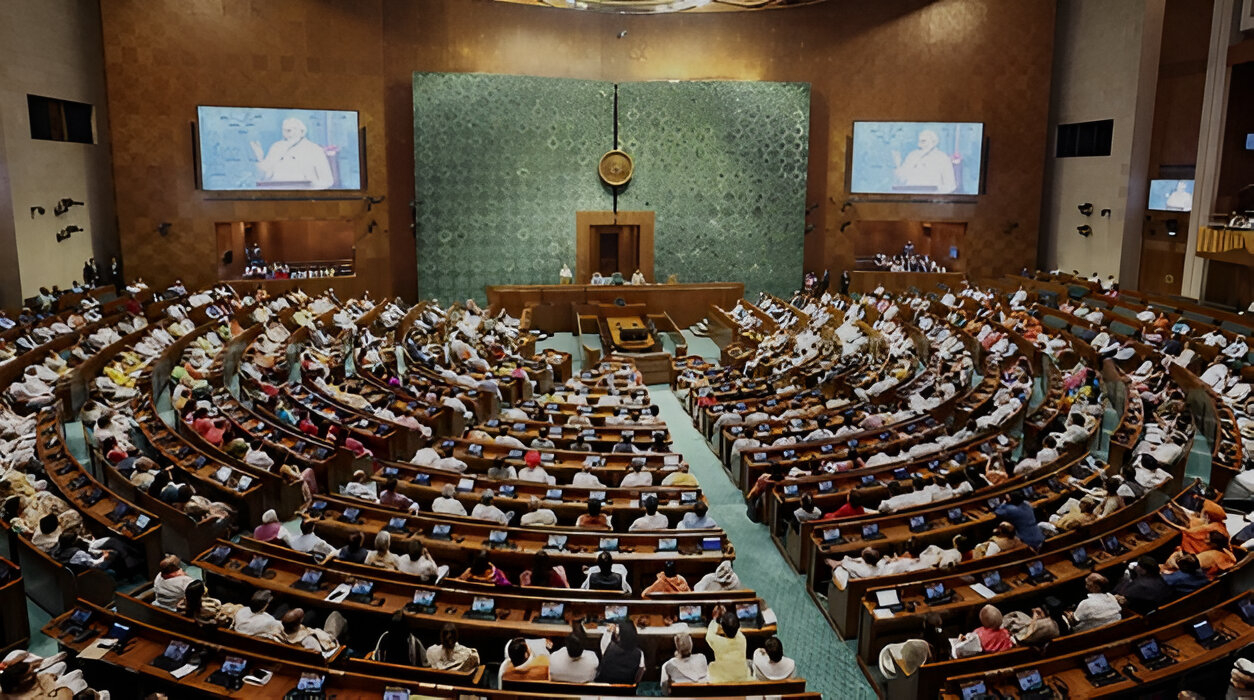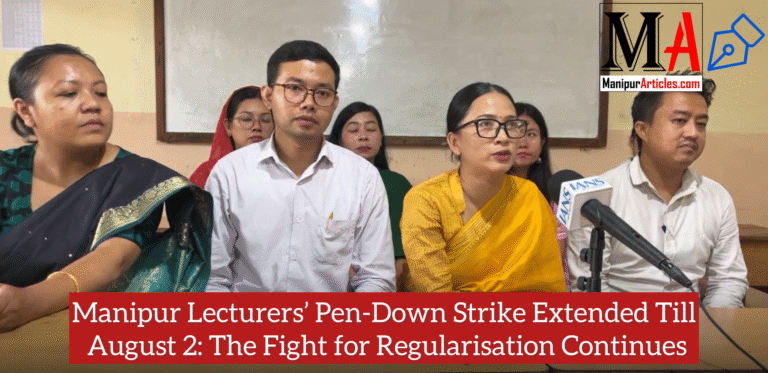Manipur Budget to be Tabled in Parliament Today: A New Chapter for Growth and Development
Introduction
Have you ever wondered what it takes to chart the future of an entire state? Today, Manipur is at the brink of a transformative moment as its budget is set to be tabled in Parliament. This isn’t just another financial document—it’s a comprehensive blueprint for progress, addressing everything from infrastructure and healthcare to education and local industry. In this article, we’re going to dive into the significance of this budget, explore its key highlights, and discuss what it means for the people of Manipur. So, grab a cup of tea and join me as we unravel the details behind this pivotal moment for the state.
Understanding the Importance of a State Budget
Imagine planning a road trip without a map. You might eventually reach your destination, but chances are you’d get lost along the way. A state budget works in much the same way—it’s the roadmap that guides development, ensures resources are allocated efficiently, and sets the direction for future growth. For Manipur, a region rich in culture yet fraught with developmental challenges, a well-crafted budget is essential. It’s more than just numbers on a page; it’s a vision for a prosperous future, a tool for balancing competing needs, and a promise to the people that every rupee will be put to work for their betterment.
Manipur’s Economic Landscape: A Snapshot
Before we delve into the specifics of the new budget, let’s take a moment to understand the economic terrain of Manipur. Known for its breathtaking landscapes and vibrant cultural heritage, Manipur also faces unique economic hurdles. With a mix of traditional industries and emerging sectors, the state has enormous potential yet remains underutilized in several areas. Key challenges include inadequate infrastructure, limited industrial growth, and a pressing need for enhanced social services. However, these challenges also present opportunities—opportunities to harness local talent, to invest in critical sectors, and to transform the region into a hub of economic activity. The upcoming budget is expected to address these issues head-on, paving the way for balanced and sustainable development.
Key Highlights of the Manipur Budget
So, what can we expect from this year’s budget? While the final details will be unveiled in Parliament, early indicators suggest several key priorities:
- Increased Investment in Infrastructure: Expect to see significant allocations for road construction, public transportation, and utilities. These investments are crucial for connecting remote areas with urban centers and for facilitating smoother trade and commerce.
- Boost for Healthcare and Education: The budget is set to put a strong emphasis on enhancing public health facilities and upgrading educational institutions. This means better hospitals, modern medical equipment, and improved school infrastructure that can drive long-term social benefits.
- Support for Local Industries: With dedicated funds to support small and medium enterprises (SMEs) and local artisans, the budget aims to empower local businesses, reduce unemployment, and stimulate economic growth from within.
- Focus on Social Welfare: Allocations for social welfare programs, including poverty alleviation schemes and support for vulnerable communities, underscore a commitment to inclusive growth.
These highlights reflect a multi-pronged approach aimed at addressing both immediate needs and long-term developmental goals.
Implications for Infrastructure Development
Imagine trying to drive on a bumpy, unpaved road every day—frustrating, isn’t it? Now, envision that same road transformed into a smooth, well-maintained highway. Infrastructure development is the backbone of any thriving economy, and Manipur’s budget aims to be the catalyst for such transformation.
With robust investments in road networks, bridges, and public utilities, the budget seeks to connect distant villages with urban centers, thus facilitating easier movement of people and goods. Improved infrastructure can lead to enhanced trade, attract investments, and open up new opportunities for tourism—one of Manipur’s untapped potential areas. The ripple effects of such developments will not only boost economic activity but also improve the overall quality of life for residents.
Focus on Healthcare, Education, and Social Welfare
Let’s face it—health and education are two of the most critical components of any society. A healthy, well-educated population is the cornerstone of progress, and Manipur’s new budget appears to understand this well.
The planned boost in healthcare funding means that more resources will be available for building and upgrading hospitals, procuring modern medical equipment, and training healthcare professionals. This can significantly reduce the gap in healthcare accessibility between urban and rural areas. Similarly, increased investments in education are expected to improve school infrastructure, introduce new learning technologies, and even expand vocational training programs. These initiatives are not just about immediate improvements; they are about empowering future generations with the skills and health needed to drive the state forward.
Social welfare initiatives form another crucial pillar of the budget. By addressing issues such as poverty, unemployment, and social inequality, the government hopes to create a more inclusive society where every citizen has a fair shot at success. Think of these measures as the glue that binds society together—a way to ensure that growth is shared, and no one is left behind.
Boosting Local Economy and Employment
What’s a budget without a focus on the local economy? For Manipur, one of the key challenges has been creating enough job opportunities for its youthful population. With unemployment being a persistent concern, the budget’s emphasis on local industry and small business support is a welcome move.
Imagine your neighborhood shop suddenly receiving a grant to expand its operations. That’s the kind of support we’re talking about here—funds that can help local businesses scale up, create more jobs, and contribute to a vibrant, self-sustaining economy. Additionally, initiatives to promote local tourism and artisanal crafts can help preserve the rich cultural heritage of Manipur while also generating revenue. When local economies thrive, the benefits are felt across the board, from increased consumer spending to higher tax revenues that can be reinvested in community projects.
Political Significance of the Budget Presentation
Now, let’s talk politics. The act of tabling a state budget in Parliament isn’t just an administrative formality—it’s a potent political statement. It signals that the state government is ready to take bold steps toward reform and development, and it serves as a litmus test for the ruling party’s vision and commitment.
In the case of Manipur, the budget presentation comes at a time when the state is grappling with both economic and social challenges. Political leaders are under pressure to deliver on promises of progress and inclusivity. The budget, therefore, is not just about numbers; it’s about accountability and the ability to meet the aspirations of the people. It sets the tone for the coming fiscal year and has the potential to either cement the current government’s legitimacy or provide ammunition for opposition critiques.
Public and Expert Reactions
So, what are people saying about the upcoming budget? Reactions have been a mix of cautious optimism and critical scrutiny. On one hand, many citizens are hopeful that the budget will finally address the infrastructure gaps, healthcare deficiencies, and economic challenges that have long plagued the state. On the other hand, experts and political analysts are urging a closer look at the allocations, questioning whether the proposed investments will be sufficient to spur real, sustainable growth.
Public opinion is divided, much like a family dinner where everyone has a different take on the same topic. Some believe that the new budget is a breath of fresh air—an opportunity to revitalize the state’s economy and improve quality of life—while others worry about the execution and potential pitfalls of ambitious spending plans. What’s clear is that the budget has become a focal point of discussion, reflecting the broader debates about Manipur’s future.
Future Prospects and Expected Outcomes
Looking ahead, the budget is expected to set in motion a series of developments that could transform Manipur’s socio-economic landscape. With targeted investments in key sectors, the state can look forward to improved infrastructure, better public services, and a more dynamic local economy.
Picture a seed planted in fertile soil—over time, with proper care and nourishment, it grows into a robust tree that benefits the entire ecosystem. Similarly, the funds allocated through this budget have the potential to nurture various sectors, leading to a multiplier effect that boosts overall growth. Whether it’s the construction of new roads that open up remote areas or enhanced educational facilities that produce a skilled workforce, the anticipated outcomes are aimed at creating long-lasting positive change.
Challenges and the Road Ahead
Of course, no plan is without its challenges. While the budget presents a promising roadmap, several hurdles must be overcome to ensure its success. One of the primary concerns is the efficient and transparent utilization of funds. In many cases, bureaucratic red tape and mismanagement can derail even the best-laid plans.
Furthermore, given Manipur’s unique socio-political context, there are challenges related to coordination among various government agencies and ensuring that investments reach the intended beneficiaries. The road to development is rarely smooth, and unforeseen obstacles—be it political resistance, natural disasters, or economic downturns—can slow progress. The key lies in robust monitoring and adaptive strategies that can tackle issues as they arise, ensuring that the vision outlined in the budget is fully realized.
The Role of Government in Ensuring Transparent Utilization
Transparency and accountability are the twin pillars on which successful implementation rests. It’s one thing to announce bold plans in a budget, but it’s another to see those plans come to life. The Manipur government will need to establish rigorous oversight mechanisms to track how funds are spent and to prevent leakage or corruption.
Imagine a well-oiled machine where every part functions in sync; that’s the level of coordination required for a project of this magnitude. By leveraging technology—such as digital tracking systems and public expenditure dashboards—the government can ensure that every rupee is accounted for. This not only builds public trust but also ensures that the developmental benefits of the budget are realized in every corner of the state.
Community Engagement: A Key to Success
No budget, however well-planned, can succeed without the active involvement of the community. Engaging local stakeholders—from business leaders and educators to grassroots organizations—is essential for ensuring that the budget addresses real needs.
Think of community engagement as a collaborative project where everyone contributes their ideas and expertise. Public consultations, town hall meetings, and feedback forums can help the government tailor its policies to suit local realities. When people see that their voices are being heard and that they have a stake in the process, the initiatives are more likely to be embraced and successfully implemented.
Learning from the Past: Lessons for a Brighter Future
History is a great teacher. Manipur has experienced its share of economic and social challenges in the past, and each cycle of planning and execution has left behind valuable lessons. Previous budgets have taught policymakers the importance of realistic goal-setting, efficient fund management, and the need for flexibility in the face of changing circumstances.
By learning from past experiences, this budget can avoid common pitfalls and adopt best practices that have proven successful elsewhere. It’s like refining a recipe over time—each iteration brings improvements that make the final dish more palatable. With the right lessons in hand, Manipur can pave the way for a future that is not only prosperous but also resilient in the face of challenges.
The Broader Impact on Northeast India
While this budget specifically targets Manipur’s development, its effects can resonate across the broader Northeast region. Improved infrastructure, enhanced social services, and a robust local economy in Manipur can serve as a model for neighboring states facing similar challenges.
Regional cooperation and shared strategies can create a ripple effect, leading to overall growth in the area. For example, better connectivity in Manipur could facilitate trade with adjoining regions, boost tourism, and encourage collaborative projects that benefit the entire Northeast. In this way, the budget is not just a local initiative—it has the potential to contribute to a more integrated and dynamic regional economy.
Economic Growth and Social Transformation: The Long-Term Vision
At its core, the Manipur budget is about transformation. It’s about taking decisive steps to address immediate issues while laying the groundwork for long-term prosperity. When executed well, the budget could lead to a cascade of positive changes—economic growth that lifts people out of poverty, social programs that foster unity, and infrastructure projects that connect communities.
This holistic vision is akin to nurturing a garden—each initiative, whether big or small, contributes to an ecosystem that thrives when all parts work together harmoniously. The long-term vision is clear: a Manipur where progress is inclusive, opportunities abound, and every citizen can look forward to a brighter future.
Conclusion
In wrapping up, the tabling of the Manipur budget in Parliament today is much more than a routine fiscal exercise—it’s a declaration of intent. It signals a commitment to addressing the region’s unique challenges head-on and to laying a strong foundation for sustainable development. With focused investments in infrastructure, healthcare, education, and local industry, this budget promises to transform the economic and social landscape of Manipur.
Yet, the journey ahead is not without its obstacles. Effective implementation, transparent fund management, and active community engagement are essential to translate these financial plans into tangible benefits. As the government moves forward, the hope is that every rupee allocated will contribute to a future where Manipur not only overcomes its challenges but also shines as a beacon of progress and unity in Northeast India.
By embracing a comprehensive approach that balances immediate needs with long-term vision, Manipur can pave the way for a prosperous tomorrow—one where development is shared by all and where every citizen can proudly say they are part of a thriving, inclusive state. The coming months will be critical as plans shift from paper to reality, and it is up to all stakeholders—government, citizens, and communities alike—to ensure that this budget serves as the catalyst for positive change.
FAQs
- What are the key highlights of the Manipur budget being tabled in Parliament?
The budget focuses on significant investments in infrastructure, healthcare, education, local industries, and social welfare programs, aiming to create a roadmap for inclusive and sustainable development in Manipur. - How will the increased infrastructure spending impact daily life in Manipur?
Improved roads, bridges, and public utilities will enhance connectivity, facilitate trade, and boost tourism, leading to easier movement of people and goods and a better quality of life for residents. - Why is community engagement important for the success of the budget?
Community engagement ensures that the budget addresses real local needs, fosters public trust, and enables collaborative efforts between the government and citizens, leading to more effective and sustainable implementation of development projects. - What challenges might hinder the effective utilization of the budget funds?
Challenges include bureaucratic delays, mismanagement of funds, and coordination issues among various agencies. Robust monitoring, transparency, and adaptive strategies are essential to overcome these hurdles. - How could the Manipur budget influence the broader Northeast region?
By setting a successful model of inclusive development and improved infrastructure, the budget can inspire similar initiatives in neighboring states, fostering regional cooperation and integrated economic growth.





